In late 1964, NBC commissioned a pilot for a series called Star Trek. It featured Jeffrey Hunter as Christopher Pike, captain of the U.S.S. Enterprise; Majel Barrett (going by M. Leigh Hudec at the time) as his first officer, the enigmatically named “Number One”; and Leonard Nimoy as Science Officer Spock, a devil-eared alien. NBC passed, but commissioned a second pilot with some alterations. Hunter and Barrett were gone, but Nimoy was partnered with William Shatner for the successful launch of Star Trek.
Pike and Number One would become interesting parts of the show’s history via reuse of the pilot in a two-part episode called “The Menagerie” and various appearances in spinoff media cross the decades before recurring throughout Star Trek: Discovery’s second season.
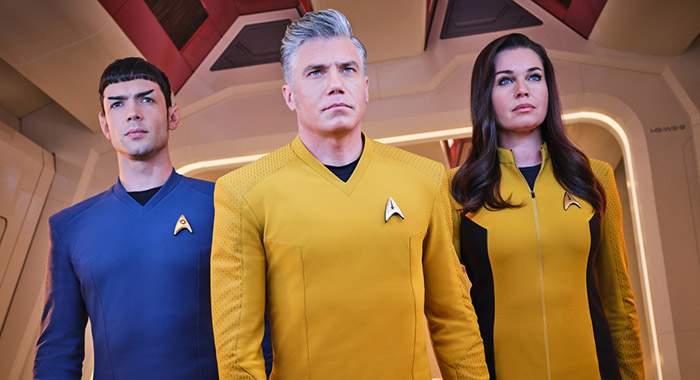
(Photo by James Dimmock/Paramount+)
And, after 55+ years, Pike, Number One, and Spock will finally be serving together aboard the Enterprise in Paramount+’s new series, Star Trek: Strange New Worlds.
“We often joke that it’s the longest pilot series pickup in television history,” Anson Mount, who first appeared as Pike on Discovery, said of the connection between his show and the original Trek pilot when Rotten Tomatoes recently caught up with him, other members of the cast, and executive producer Akiva Goldsman.
Goldsman also highlighted those connections between the original series and Strange New Worlds in saying, “This is very much an attempt to convey the emotional values of the original series.”

(Photo by Marni Grossman/Paramount+)
As with the original, Strange New Worlds will tell episodic stories — that is, the Enterprise will warp into a new situation each week and solve it by the end of the hour. It is the format of the original series and later 20th century spinoffs like Star Trek: The Next Generation, but differs from the serialized storytelling of more recent programs like Discovery and Goldsman’s own Star Trek: Picard, in which a season-long problem is generally unresolved until the finale.
Read Also: Star Trek: Strange New Worlds First Reviews: ‘Smart, Addictive, and Flat Out Fun’
The change back to the older format offers a few dividends, like a heightened catharsis at the close of each story. It also creates a situation in which one episode can be harder edged while the next veers closer to comedy.
“Think of the original series; you could go from fantasy, to straight horror, to sort of historical recreation, to hard sci-fi, comedy,” Goldsman explained. “One of the joys of going back to episodic was to be able to play those scales and to be able to jump from a Hunt for Red October–like thriller to [an episode with] a ‘Shore Leave‘–like nature.”
Of course, being a modern series, character arcs, emotional beats, and other ideas will carry over from week to week, and “how [the episodes] are positioned in relation to each other also has a kind of overall effect that hopefully is gratifying,” according to Goldsman.
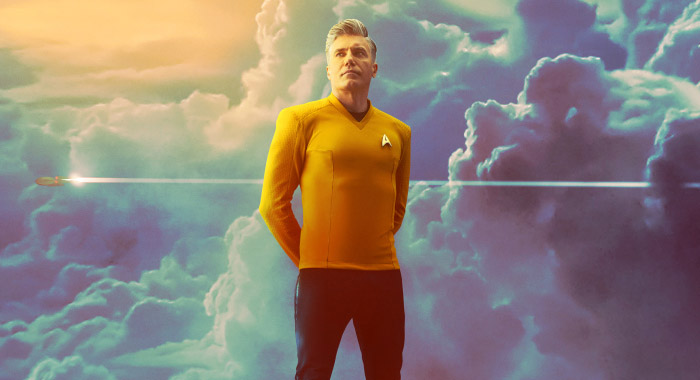
(Photo by James Dimmock/Paramount+)
“We’ve really been pushing the envelope in terms of style and genre,” Mount added. “[We’re] really encouraging our directors to come in with their own sense of vision, not just in terms of their lenses or the shots, but really, ‘What’s something you’ve never seen on Star Trek that you want to see?’” The results lead to a new way of presenting Trek stories.
The format also allows Strange New Worlds to lean heavily into Trek’s sense of fun and camaraderie. Or, as Goldsman put it, “[what] we felt was fun and connection and belonging and being transported to this other world once a week.” The sensation will be different for those used to the mode and pace of Discovery or Picard, but to use a Vulcan-ism, it will be “agreeable.”
Cultivating the sense of fun aboard ship is Pike himself. Quick-witted, empathetic, and warm even to a cadet, he leads via consensus building and collaboration. He also hosts regular dinner parties to promote familiarity and respects a wide array of opinions. That openness also leads to an amount of candor aboard ship that may surprise even the most devoted Trekkie.
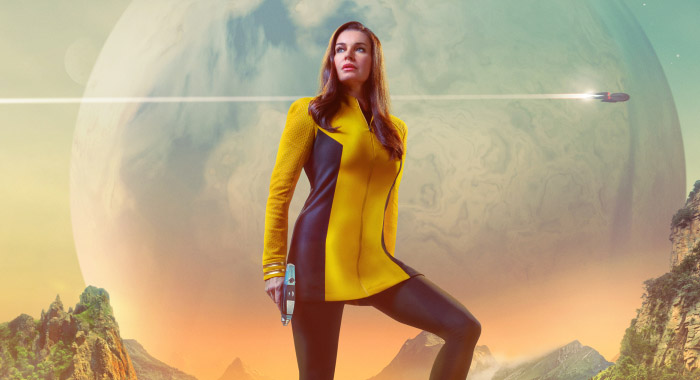
(Photo by James Dimmock/Paramount+)
“It’s the way Pike runs his Enterprise,” Rebecca Romijn, who plays Number One, said. “It might not be like that on the other ships.”
For her part, Romijn considers the opportunity to define the character beyond the original Star Trek pilot (and some Trek novels) as a “slightly” daunting task. Although a veteran of the X-Men franchise, where she learned of fan expectations, she stills notes there is a pressure of sorts to “getting it right.”
“The Star Trek fans are very protective of these characters and the franchise, and we know it. I feel the same way. I think we all feel the same way,” she added. But in Number One’s case, it comes with a certain opportunity as well.
“She only got 14 minutes of screen time [in the original pilot]. We only saw her doing the tasks at hand. We didn’t know her as an actual character,” she explained. Strange New Worlds offers a chance to for Romijn and the writing team to explore her with in more depth with, as it turns out, a little help from the Trek novels — one of which gave the character her now-canon first name: “Una.”
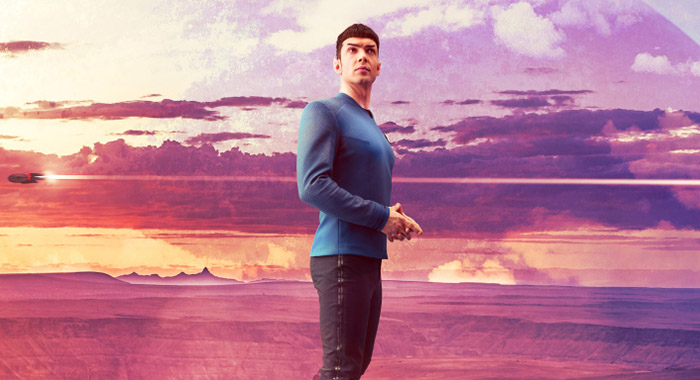
(Photo by James Dimmock/Paramount+)
Goldsman noted choices about Number One’s background and a particular situation Spock (Ethan Peck) finds himself in early on were not intentionally pulled from the novels, but happened as development “rubbed up against” Trek’s long publishing history.
“An extrapolation of the original series can create overlap,” he explained. “We were imagining things based on the original show and so many of these wonderful novelists were doing the same.”
Of course, some of the choices made on Strange New Worlds may align with the novels, but still create some differing opinion among the fanbase. “I only hope that a lot of fans would be really pleased and satisfied with the amount of love and care we’ve put into this show and that we’ll convert new fans and create new Trekkies,” Peck said when asked about some of the potentially controversial story points viewers will soon see.
Perhaps less controversial though, will be his portrayal of Spock. Building from his time on Discovery, the character will be decidedly more in tune with his emotions than Nimoy’s depiction of him in the original series. Peck even argued that greater sense of balance viewers saw in the later season 2 episodes of Discovery and will see on Strange New Worlds speaks to a younger Spock who doesn’t “know how to be as closed off as he will become.” As he further explained, “I think he’s discovering how human to be or how Vulcan to be and I have the joy of exploring that every day with the scenes that are written for me.”
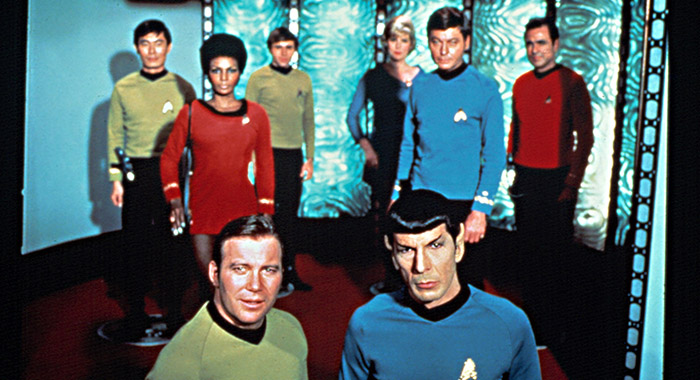
(Photo by Paramount/Courtesy: Everett Collection)
It is a journey with the potential to run parallel to Nimoy’s own discovery of the character, who evolved from a fiery alien spotted smiling in the original pilot to the paradigm of logic and emotional suppression seen through much of the original series (although we’ll note he also smiles a mere minute into the second Trek pilot, too).
One thing Peck will carry over from Nimoy, though, is his peculiar pronunciation of “sensors.” With the emphasis on the second vowel, it was a fairly accepted way to say the word in the 1960s — fellow Star Trek original series star DeForest Kelley also said it with the long “o” — but as it became more common, the stress became less pronounced. Over on Star Trek: Lower Decks, it’s even become a joke as only Vulcans say it the Nimoy way.
“The pronunciation of ‘sensors’ never becomes second nature,” Peck admitted. “[But I] bring in that quality that was established by Nimoy. I always enjoy finding those moments and I’ll never stop doing it.”
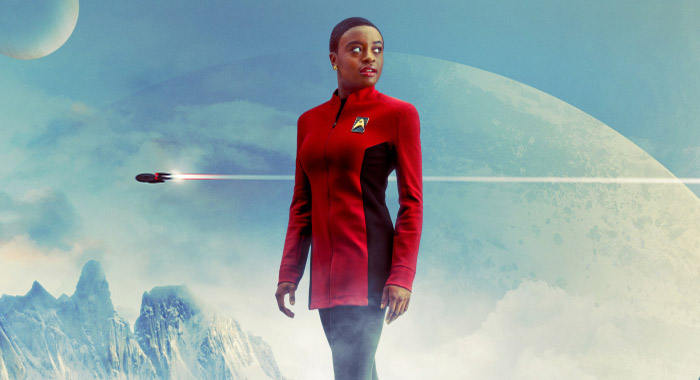
(Photo by James Dimmock/Paramount+)
Beyond the main three from the pilot, Strange New Worlds also feature a handful of other established Trek characters and a handful of new additions who also lean into the show’s sense of fun. Celia Rose Gooding, for example, offers a new take on Nyota Uhura. Viewers quickly learn she is unsure if Starfleet is right for her.
“Because Star Trek takes place in space you never really question it — ‘Is this where everybody wanted to end up?’” she said of the character’s new starting point. And though Trekkies know her eventual destiny, Gooding still enjoyed playing up her doubts. “I think that is very human, and I think that gives an opportunity for the audience to place themselves into this character and say, ‘I don’t know how I would feel standing on the surface of a comet or trying to save lives of aliens who I don’t know how to communicate with half of the time.’”
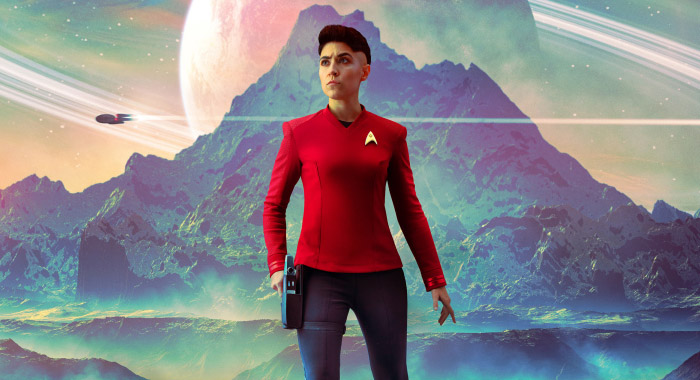
(Photo by James Dimmock/Paramount+)
Melissa Navia, meanwhile, plays helmsman Lt. Erica Ortegas; a new character ready to join the ranks with Hikara Sulu as one Trek’s great pilots in terms of ability. Also like Sulu, she exudes an effortless cool. “That come from an organic space,” she said of the way the writers envisioned her. “And so everything feels like nothing’s forced.” We suspect the character will quickly become an icon and when we said as much, Navia was quick to say she “just wants to truly honor what Star Trek is” with the character.
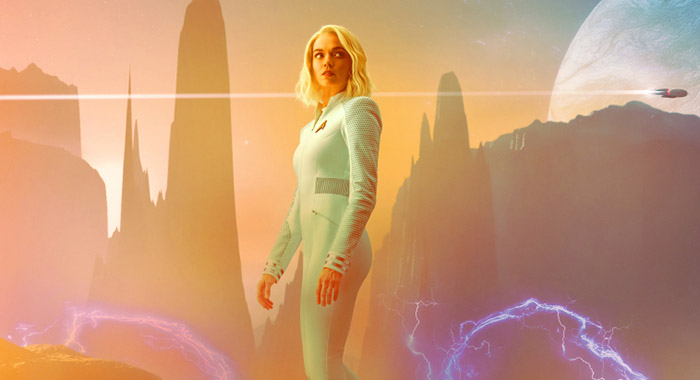
(Photo by James Dimmock/Paramount+)
Down in Sickbay, a pair of familiar characters take charge. Dr. M’Benga (Booker Bradshaw) appeared in two episodes of the original series while Nurse Christine Chapel (Barrett’s second role in the program) was a recurring presence throughout its three seasons. In Strange New Worlds, the pair are 10-or-so years younger and played by Babs Olusanmokun and Jess Bush, respectively. In each case, coming to the characters offered something different. For Bush, it was to use “the candor and the wit and the humor” Barrett brought to the role and to emphasize Chapel’s “dedication to the people that she cares about in her job.” Also, from the episodes we’ve seen, there is a heightened sense of youth to the character that will prove interesting considering subsequent developments.

(Photo by James Dimmock/Paramount+)
Olusanmokun, meanwhile, saw it more as a “newer beginning” with a character who was far less established.
“I think it’s my privilege now and challenge now to be able to go forward and create something and bring more life [to it] because of the opportunity I get to play him more,” he said. In a switch from the original series’ curmudgeonly doctor, M’Benga exudes warmth and empathy, which Olusanmokun said was “a beautiful part of it for me.”
But for all the episodic-ness and bonhomie on the Enterprise, Strange New Worlds does come with at least one recurring idea: Captain Pike knows his fate. According to Mount, Pike’s great conflict in that regard is “figuring out what happens between now and then, and is the knowledge of that going to affect my ability to lead and protect hundreds of people that serve under me and trust me? And can I honestly serve with something that could turn out to be an existential handicap?”
Those questions are directly addressed in some of the episodes we saw and Goldsman told us they will hang over the first season even as Pike heads off to new battles, first contact situations, and the fun of exploration.
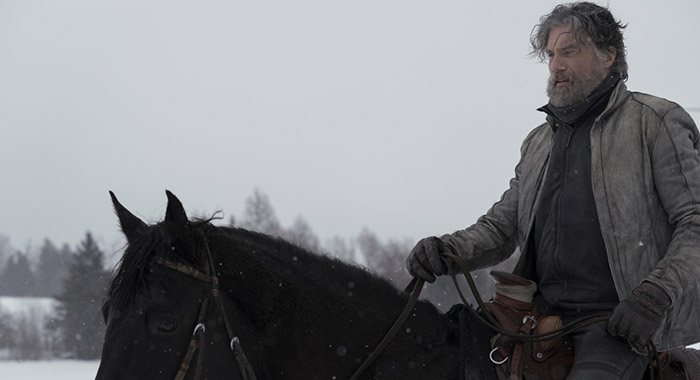
(Photo by Marni Grossman/Paramount+)
“We didn’t want to just skirt the issue and get on with the show,” Mount continued. “We wanted to make that a pivotal part of the development of the character in the show itself.”
Goldsman added, “Part of what I do believe in Star Trek storytelling is that there are fundamental conditions to being human that are not time specific — whether they be the idea of melancholy and depression or the idea of our wrestling with an understanding of destiny.”
And really, confronting the essential human issues is as key to Star Trek as Spock’s pronunciation of “sensors.”
![]() 98%
Star Trek: Strange New Worlds: Season 1
(2022)
premieres on Thursday, May 5 on Paramount+.
98%
Star Trek: Strange New Worlds: Season 1
(2022)
premieres on Thursday, May 5 on Paramount+.